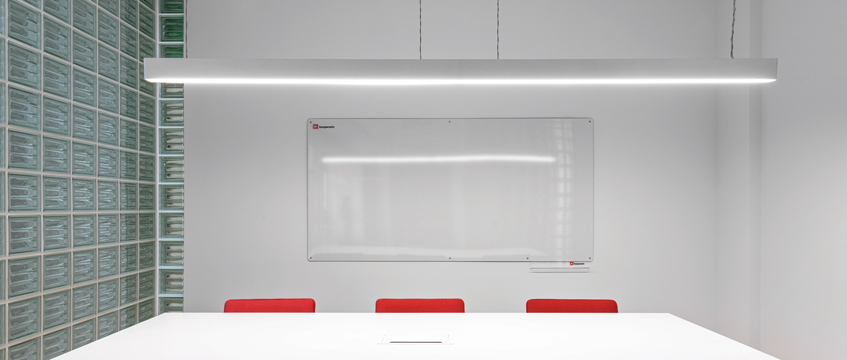Writing in these pages in July, Greg Simms and Andrew Cartmell explored some of the issues that arise in rights of light claims, and looked forward to their resolution by the High Court in Sirosa Properties Establishment v The Prudential Assurance Company Ltd, which was due to be heard over eight days in November. And at the beginning of this month, in their article Has Waldram had its day? Alix Lee and Mike Scott also welcomed a decision in the same case, hoping it would provide judicial guidance to surveyors and practitioners on the current and future relevance and application of the Waldram method. Unhappily for them, the case has just settled on terms that are confidential. Nevertheless, there are some points of interest for practitioners to note.
Sirosa – the facts
Sirosa owns a six-storey building on Oxford Street, W1; the Prudential owns the adjacent building a few feet away across Wells Street, formerly called Wells House. In 2019, the Prudential obtained planning permission to demolish its building, and erect in its place a nine-storey building, some three storeys higher than the previous structure. It was common ground that Sirosa’s owners enjoyed rights of light over the Prudential building in favour of their building; that the new building would diminish the amount of light received by their building; and that, in order for that light to be maintained at a level which would cause no interference, it would have to be cut back in size by a considerable amount. The Prudential offered compensation to Sirosa in return for being allowed to build its building, but Sirosa maintained that it wished the new building to be cut back.
When the parties’ rights of light surveyors failed to reach agreement to resolve the dispute that had arisen, Sirosa issued proceedings seeking an order preventing the Prudential erecting its new building in a way that would interfere with its rights of light, and damages in the alternative. In the meantime, the Prudential proceeded with the demolition of its building, and completed the ground works and lift shaft for the proposed new building, but went no further pending the outcome of the proceedings.
Each party proposed to call three experts in the litigation: a rights of light surveyor, to give evidence regarding the extent of the interference with Sirosa’s light; a rental valuation surveyor, to give evidence about the diminution in value of Sirosa’s building were the light to be reduced as planned; and a capital valuation surveyor, to give evidence as to the amount of extra development profit the Prudential might be able to make from that part of its development that interfered with Sirosa’s rights of light.
Each set of experts differed widely in their assessments of the impact of the proposed new building. The rights of light surveyors agreed that Sirosa’s building would experience a quantum of light loss at each floor if the consented development proceeded without cutback, but differed both on the amount of the loss (and on the measurement tools used to gauge it), and on the materiality of electric lighting (it being common ground that office users invariably work by artificial light).
For their part, the rental valuation surveyors argued variously that the new Prudential building without cutback would cause either a diminution in the value of Sirosa’s building of £8.8m (Sirosa); or no impact at all on rental or capital value (Prudential).
And finally, the development profit surveyors ranged in their opinions from £34m (Sirosa) to £10m (Prudential).
The stage was therefore set for a dispute that would tackle virtually every contentious area surrounding rights of light issues. To cap it all, the judge who was to sit to hear the dispute was the recently retired Sir Paul Morgan, whose suitability for the task (quite apart from the breadth and depth of his specialism in property law) was enhanced by his editorship of one of the principal texts on the subject, Gale on Easements; his membership of the group advising the Law Commission in their 2014 Rights to Light report (Law Com No 356); and his role as leading counsel for the developer in the important authority of Midtown Ltd v City of London Real Property Co Ltd [2005] 1 EGLR 65.
As counsel in Sirosa v Prudential, we have a close familiarity with the arguments that would have been made. We naturally formed our own views as to the likely success or failure of those arguments; and we developed a fair idea of how our experts would be likely to perform. It would be inappropriate to share those views here, but we do wish to take this opportunity, with thanks to our editors at EG, to voice our thoughts on some aspects of the current level of debate. We put valuation on one side, since that is not a subject that is confined to rights of light, and focus purely on the issues concerning the quantity and quality of the light.
The benefits of natural light
In Colls v Home and Colonial Stores Ltd [1904] AC 179, Lord Davey famously said the owner of rights of light was entitled to “a quantity of light, the measure of which is what is required for the ordinary purposes of inhabitancy or business of the tenement according to the ordinary notions of mankind”. Colls itself concerned a building in Worship Street, Shoreditch (which still exists, together with its ancient lights), which housed 90 clerical staff in a room some 50 ft in depth, lit by five windows on the street. The defendant proposed to erect a building on the other side of Worship Street, the effect of which would be to interrupt some of the flow of light. The evidence was that it had been the claimants’ practice to use electric light in the back part of the room, and practically it was necessary to do so even in the daytime. Moreover, the proposed building would not affect the selling or letting value of the claimants’ building, which would be still sufficiently lighted for all ordinary purposes of occupancy as a place of business. The trial judge dismissed the claim for an injunction and damages. Surprisingly, the Court of Appeal allowed the appeal and granted an injunction preventing the development, only for that court then to be reversed by the House of Lords.
There was no discussion in Colls of any of the benefits of natural light save that of task-illumination: was the remaining light sufficient for “ordinary business purposes”? In Midtown, Paul Morgan QC (as he then was) developed this theme further, seeking to persuade Peter Smith J that not only should no injunction be granted restraining the allegedly interfering development, but that damages should not be awarded either, because permanent artificial light was routine for the defendants’ offices, with the result that the reduction in natural light was irrelevant. The judge sympathised with these submissions, but rejected the proposition that there could be no interference. Prudential effectively picked up these cudgels where Morgan had dropped them.
Since Midtown, the benefits of natural light have become more widely recognised. At the same time as criticism of the Waldram method of measurement has developed, so too has the appreciation of natural light as an important component of wellbeing. All the latest literature produced by, among others, the Building Research Establishment and the Chartered Institute of Building Services Engineers emphasises the point, saying, for example: “Access to daylight in offices is known to be beneficial to the health and wellbeing of occupants. Where daylight can be used to provide illumination of an office space, designers should seek to make the most of this valuable lighting source.” Accreditation schemes have sprung up (such as BREEAM, LEED and WELL) which enable owners to herald the sustainability and wellbeing credentials of their building. In all of these schemes, the availability of natural light affects the scoring. And in Sirosa, ironically, the marketing literature for both parties drew attention to the flood of natural light that each building enjoyed, or would enjoy – although in the Prudential’s case, its enjoyment would come at the expense of some of the light enjoyed by Sirosa.
Reflections
Among other matters which would have arisen for determination were the relevance of reflected light (of which Waldram takes no account, but which other measurement techniques use); and the suitability of damages as an alternative remedy. As to the first, it seems wrong that a developer should be able to point to the availability of reflected light from a white-painted wall forming part of the offending building (as did the defendant in Beaumont Business Centres Ltd v Florala Properties Ltd [2020] EWHC 550 (Ch); [2020] EGLR 20, albeit unsuccessfully), when the owner of the right has no entitlement to insist on the wall remaining white (or clean). The right in question has to be capable of being the subject matter of a grant – and reflected light does not qualify.
And as to damages in lieu of an injunction, the remarks of the vice-chancellor in Dent v Auction Mart Company (1866) LR 2 Eq 238 seem right, after all these years. If the owner of the right considers the inconvenience and annoyance that would be caused by the infringement as so great as not to be compensatable in damages, it seems wrong in principle that they should be refused an injunction, and instead given that sum of money that the court considers would have been agreed. “That would be conceding to those who are desirous of erecting lofty buildings the existence of some unknown Act of Parliament containing all the provisions of the Lands Clauses Act,” the vice-chancellor said in Dent. “It appears to me that is a mistaken view of the jurisdiction of the court.”
Guy Fetherstonhaugh KC and Phil Sissons are members of Falcon Chambers, and acted for Sirosa Properties Establishment, instructed by Ed Cracknell of Russell-Cooke LLP, assisted by Harriet Allsop








